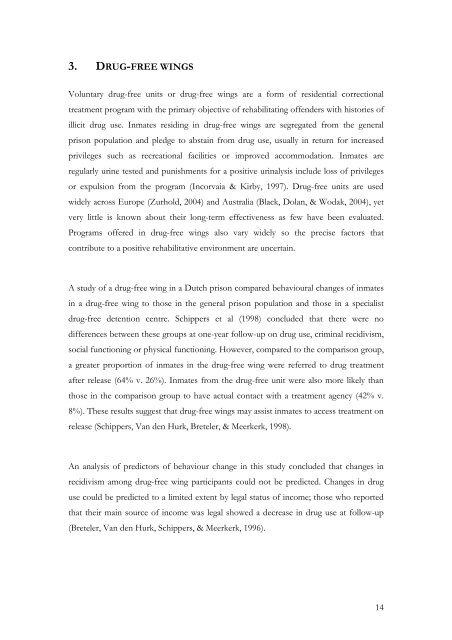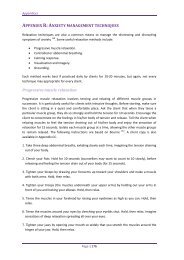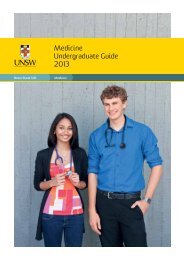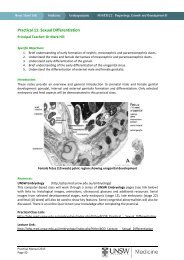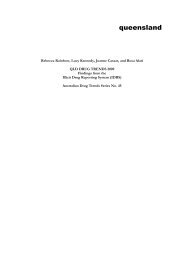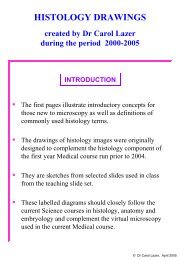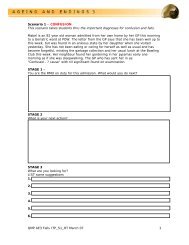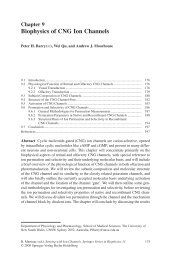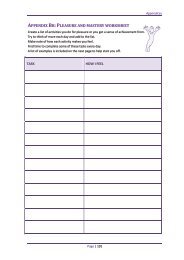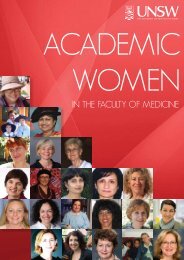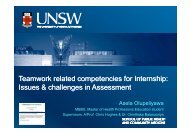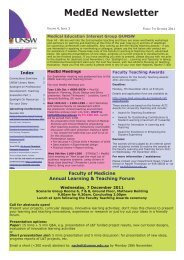Sarah Larney, Bradley Mathers and Kate Dolan Illicit drug treatment ...
Sarah Larney, Bradley Mathers and Kate Dolan Illicit drug treatment ...
Sarah Larney, Bradley Mathers and Kate Dolan Illicit drug treatment ...
- No tags were found...
Create successful ePaper yourself
Turn your PDF publications into a flip-book with our unique Google optimized e-Paper software.
3. DRUG-FREE WINGSVoluntary <strong>drug</strong>-free units or <strong>drug</strong>-free wings are a form of residential correctional<strong>treatment</strong> program with the primary objective of rehabilitating offenders with histories ofillicit <strong>drug</strong> use. Inmates residing in <strong>drug</strong>-free wings are segregated from the generalprison population <strong>and</strong> pledge to abstain from <strong>drug</strong> use, usually in return for increasedprivileges such as recreational facilities or improved accommodation. Inmates areregularly urine tested <strong>and</strong> punishments for a positive urinalysis include loss of privilegesor expulsion from the program (Incorvaia & Kirby, 1997). Drug-free units are usedwidely across Europe (Zurhold, 2004) <strong>and</strong> Australia (Black, <strong>Dolan</strong>, & Wodak, 2004), yetvery little is known about their long-term effectiveness as few have been evaluated.Programs offered in <strong>drug</strong>-free wings also vary widely so the precise factors thatcontribute to a positive rehabilitative environment are uncertain.A study of a <strong>drug</strong>-free wing in a Dutch prison compared behavioural changes of inmatesin a <strong>drug</strong>-free wing to those in the general prison population <strong>and</strong> those in a specialist<strong>drug</strong>-free detention centre. Schippers et al (1998) concluded that there were nodifferences between these groups at one-year follow-up on <strong>drug</strong> use, criminal recidivism,social functioning or physical functioning. However, compared to the comparison group,a greater proportion of inmates in the <strong>drug</strong>-free wing were referred to <strong>drug</strong> <strong>treatment</strong>after release (64% v. 26%). Inmates from the <strong>drug</strong>-free unit were also more likely thanthose in the comparison group to have actual contact with a <strong>treatment</strong> agency (42% v.8%). These results suggest that <strong>drug</strong>-free wings may assist inmates to access <strong>treatment</strong> onrelease (Schippers, Van den Hurk, Breteler, & Meerkerk, 1998).An analysis of predictors of behaviour change in this study concluded that changes inrecidivism among <strong>drug</strong>-free wing participants could not be predicted. Changes in <strong>drug</strong>use could be predicted to a limited extent by legal status of income; those who reportedthat their main source of income was legal showed a decrease in <strong>drug</strong> use at follow-up(Breteler, Van den Hurk, Schippers, & Meerkerk, 1996).14


